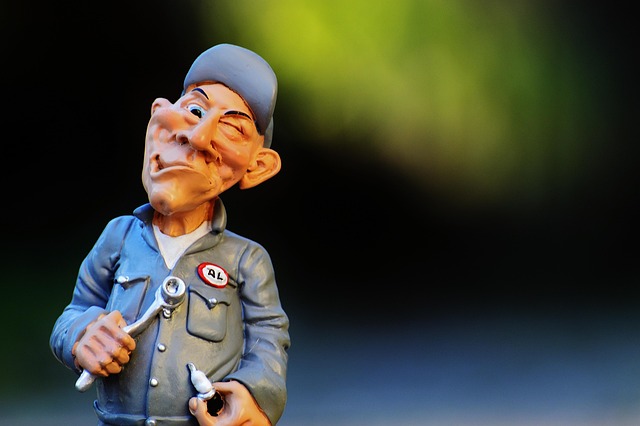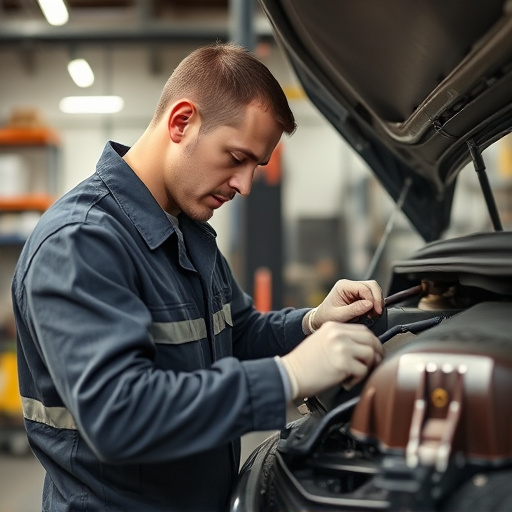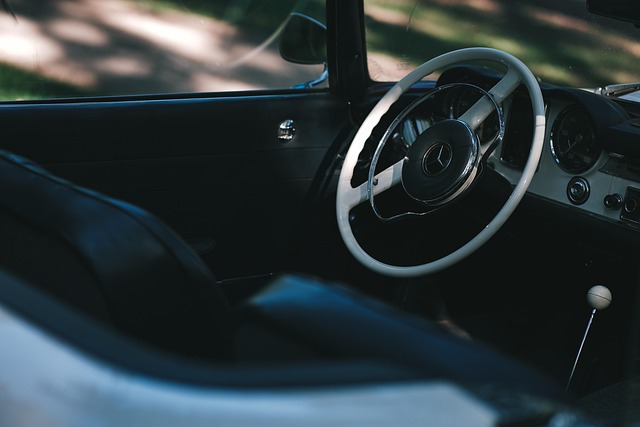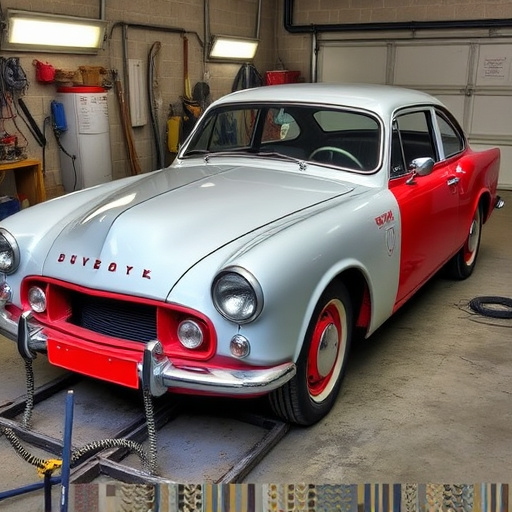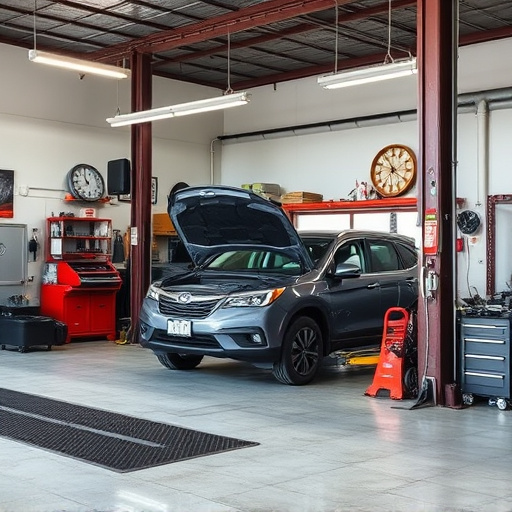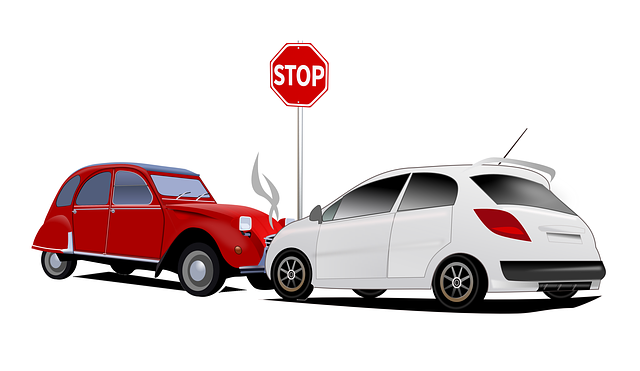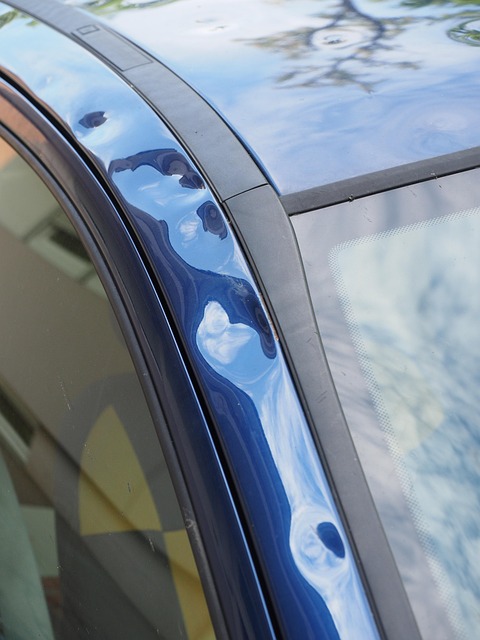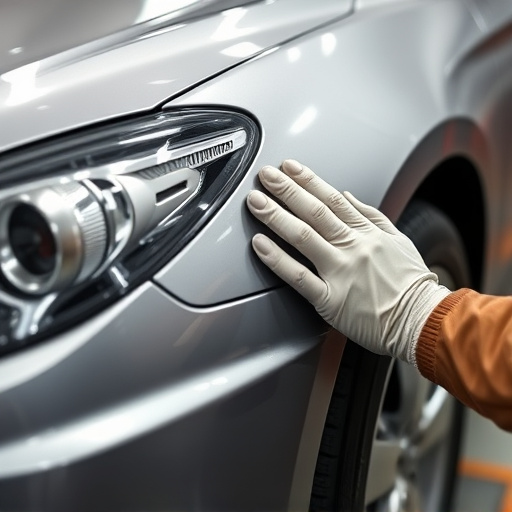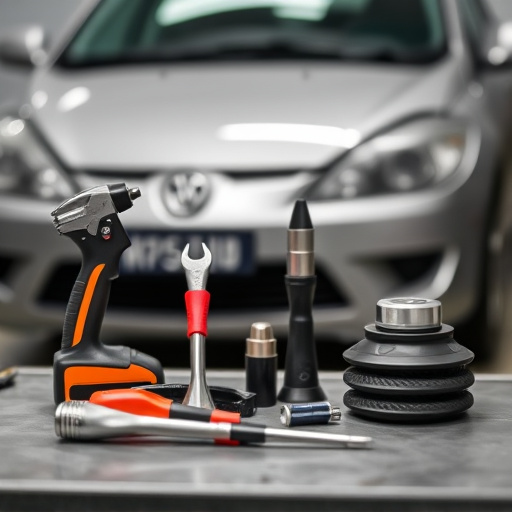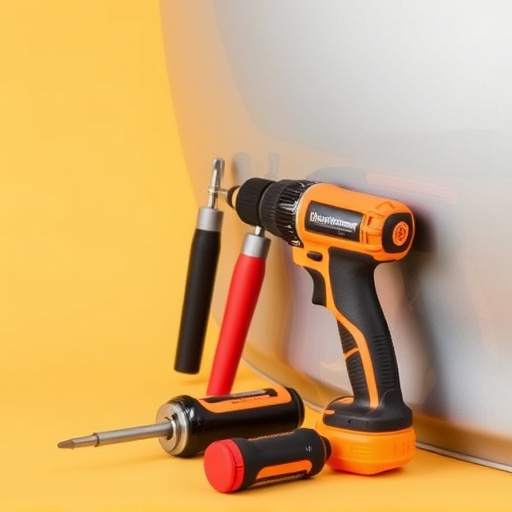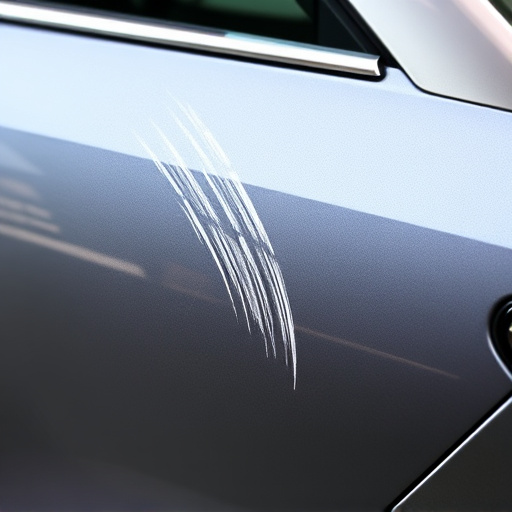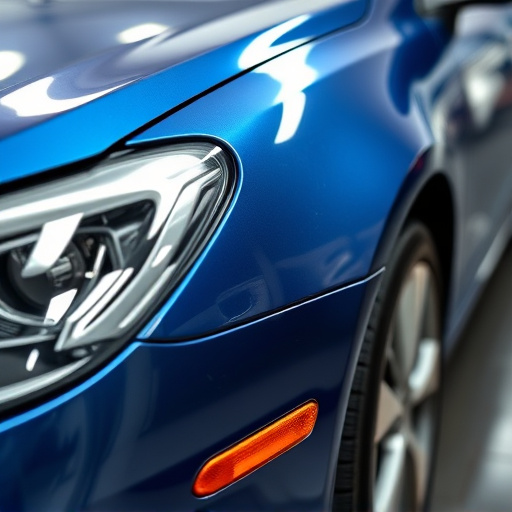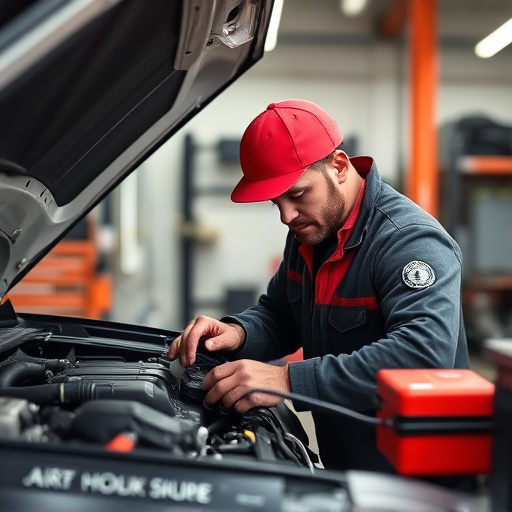After a collision, the accurate calibration of Electronic Control Units (ECUs) and sensors is crucial for safe and optimal vehicle performance. Initial impacts can disrupt the ECU network, leading to malfunctions or inaccurate readings. Skilled auto body shops use advanced techniques like paintless dent repair and specialized diagnostic tools to inspect, replace, clean, and recalibrate ECUs and sensors, ensuring they function within predefined parameters. Road testing post-repair allows for dynamic calibration, identifying lingering issues. These steps are essential for enhancing safety and vehicle performance after any collision.
Collision repairs can significantly impact vehicle electronics, particularly ECUs (Electronic Control Units) and sensors. These components play a crucial role in modern vehicles’ performance and safety systems. When a collision occurs, proper calibration of ECUs and sensors becomes essential for accurate electronic diagnostics. This article explores the effects of collisions on these calibrations, offering insights into strategies to ensure precise vehicle operation post-repair, focusing on optimal electronic diagnostics and driver safety.
- Understanding ECU and Sensor Calibration in Vehicles
- Impact of Collision Repairs on Electronic Diagnostics
- Strategies for Accurate Calibration After Collision Events
Understanding ECU and Sensor Calibration in Vehicles
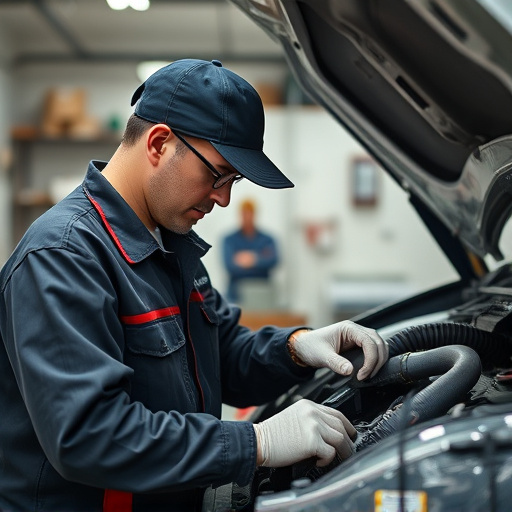
In modern vehicles, Electronic Control Units (ECUs) play a pivotal role in managing various systems and ensuring optimal performance. These advanced computer systems are responsible for interpreting data from sensors and executing commands to control everything from engine operation to braking and steering. Sensor calibration is equally crucial, as it ensures that the ECUs receive accurate and consistent information, enabling precise vehicle diagnostics and operations.
Calibration involves adjusting and fine-tuning sensor readings to meet specific performance criteria. This process is particularly essential for safety-critical systems like anti-lock braking (ABS) or airbag deployment units, where even minor discrepancies in sensor data can lead to catastrophic failures. Collision repairs, especially those involving complex electronic diagnostics, can disrupt the delicate balance of ECU and sensor calibrations. Auto frame repair services or visits to a collision repair shop may require recalibration to maintain vehicle functionality and safety standards after an accident.
Impact of Collision Repairs on Electronic Diagnostics
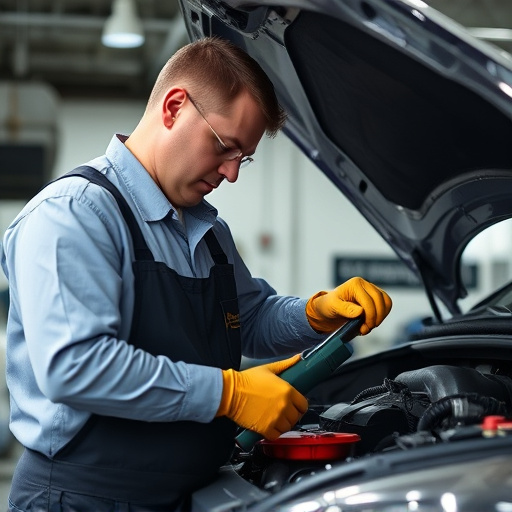
In the aftermath of a collision, the impact can disrupt the delicate balance of electronic diagnostics within a vehicle. Electronic Control Units (ECUs) and sensors are integral components that govern various systems, from engine performance to safety features. These units require meticulous calibration for optimal functioning. Collision repairs, while essential for structural integrity, may inadvertently affect these calibrations. Skilled auto body shops employing advanced techniques like paintless dent repair can minimize such disruptions.
Auto repair services that specialize in collision repair understand the intricacies of these systems. They employ trained technicians who meticulously assess and adjust ECUs and sensors to ensure they function at peak efficiency post-repair. This precision is crucial, as even slight deviations in calibration could lead to performance issues or unsafe operating conditions. Restoring these components to their original specifications guarantees that vehicles return to their optimal state after a collision, enhancing both safety and reliability on the road.
Strategies for Accurate Calibration After Collision Events
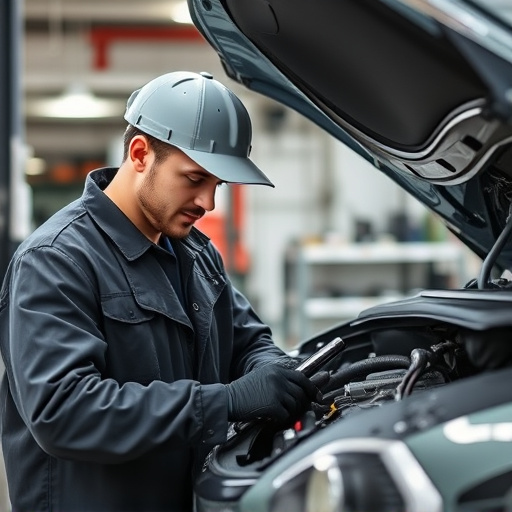
After a collision event, accurate calibration of Electronic Control Units (ECUs) and sensors is crucial for safe and optimal vehicle performance. The initial impact can cause disruptions in the intricate network of ECUs, leading to potential malfunctioning or inaccurate readings. To ensure precision, several strategies can be employed.
Firstly, a thorough inspection of the vehicle involves checking all sensors, including those responsible for critical functions like engine management, braking, and stability control. Any damaged or contaminated sensors should be replaced or cleaned, respectively, to maintain accuracy. Next, advanced diagnostic tools can be utilized to calibrate affected ECUs, ensuring they operate within predefined parameters. Additionally, road testing is essential; driving the vehicle post-repair allows for dynamic calibration, identifying any lingering issues under real-world conditions. These steps are vital in restoring proper sensor and ECU functionality, enhancing both safety and overall vehicle performance following a collision, be it a minor fender bender or more severe dent repair.
In light of the above discussions, it’s evident that collision repairs can significantly impact electronic diagnostics and sensor calibrations in vehicles. Understanding these intricate systems and their calibration is crucial for ensuring optimal vehicle performance and safety after a collision event. By implementing accurate calibration strategies post-collision, technicians can minimize potential issues with electronic diagnostics, ultimately enhancing overall vehicle reliability. This becomes increasingly vital in today’s advanced automotive landscape where ECU and sensor calibrations play a pivotal role in seamless vehicle operations.
